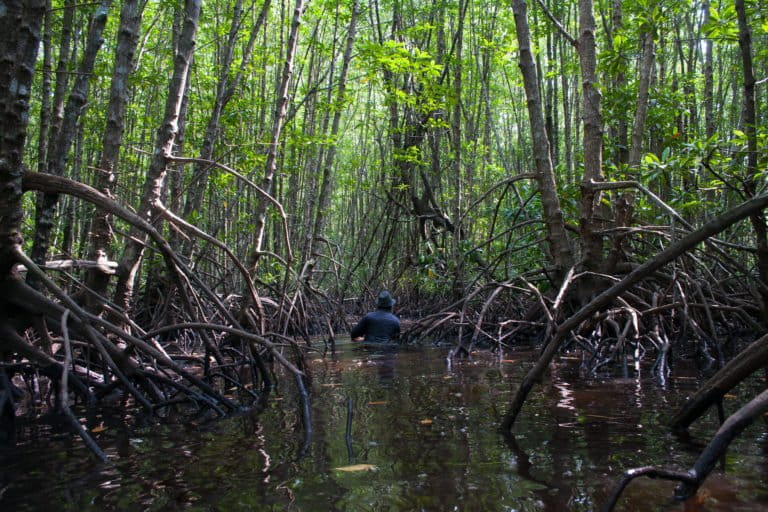- For years, weak law enforcement and low public awareness meant environmentally dangerous practices were commonly employed in countries like Indonesia.
- But local and national government reforms, combined with customary traditions and ambitious NGO programs, are beginning to address the problem.
- One village in western Borneo has seen a dramatic recovery in fish stocks after temporary fisheries closures were enacted.
SUNGAI NIBUNG, Indonesia — The phone signal comes and goes and the electricity grid has yet to reach this patch of jungle on the west coast of Borneo. The quickest way into the village of Sungai Nibung is by boat through the rivers. (Sungai means “river” in Indonesian.) You arrive at a small dock put up by fishermen, onto which shrimp catches are pulled from nets and sorted by size.
Tauke, a fisherman descended from pioneer Chinese traders, concentrates as he keeps count of the incoming shrimp. “These large ones are Class A,” Tauke tells Mongabay, his eyes fixed on a calculator. “If you want smaller ones we also have them further in.”
For years, weak law enforcement and low public awareness meant environmentally dangerous practices were commonly employed in global fisheries. Here in western Borneo, fishermen often bombed, poisoned and netted catches indiscriminately. Closer to shore, mangroves were ripped up for aquaculture, and much of the tree cover inland converted to plantations.
A consequence of overfishing and depletion of the habitat on which fisheries stocks rely is both a dwindling catch and declining incomes. But local and national government reforms, combined with customary traditions and ambitious NGO programs, are beginning to address the problem.

The village along the Nibung River accounts for 31 square kilometers (12 square miles) of protected land, according to a 2017 ministry of environment decree. Different zones within this area offer protections for different species. Crabs, turtles and mangrove trees are all protected along various stretches of the river.
In total, some 7 square kilometers (3 square miles) in the Nibung River is closed for all fishing at any one time. But the ban isn’t permanent. Crabs and many fish have fast rates of return, and stocks can quickly replenish even after a brief moratorium.
“It’s only for three months to allow animals in the area to reproduce,” says Miftah Zam Achid, who leads outreach programs for the Planet Indonesia Foundation, an NGO.
Freshwater crabs, for example, are caught in the peak season between December and February. Then they’re left to their own devices during the March-May mating season. Natural rhythms also play a part when the time comes to harvest again. Tidal patterns, for example, determine the time of day the crabs may be caught.
Significantly, the moratorium was passed by the village government (a copy of the rules can be found in front of the village government office). Violators can face fines and social censure.





